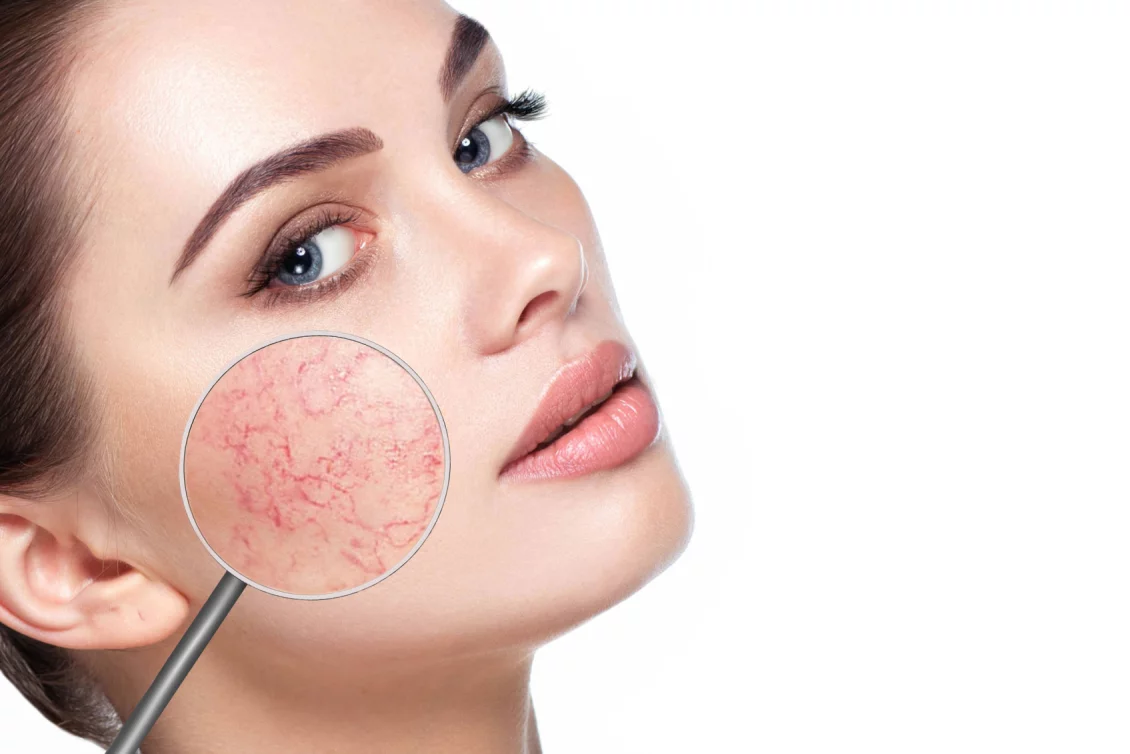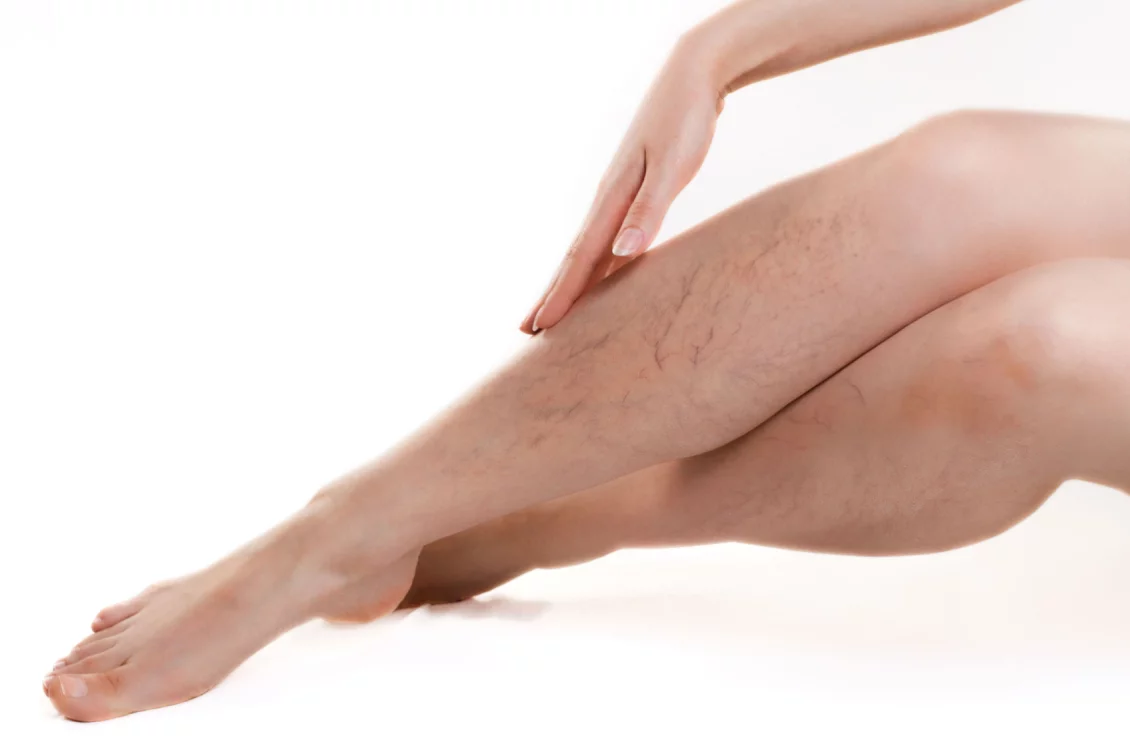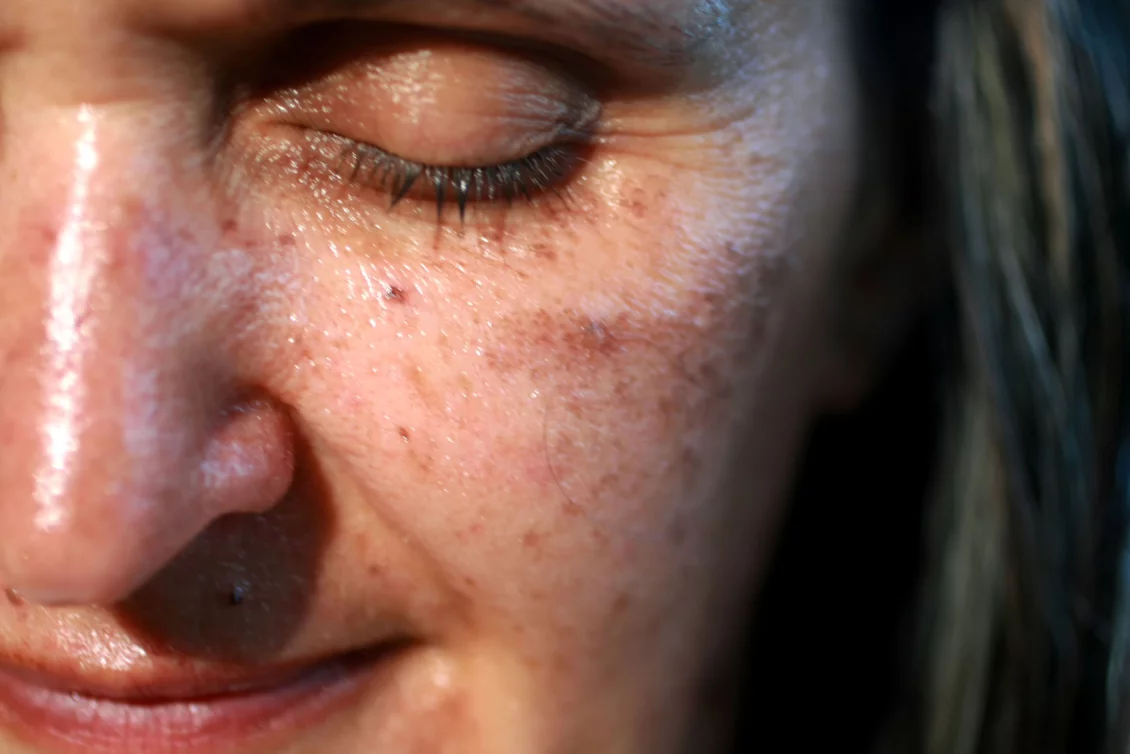What are the symptoms of hyperpigmentation?
When it comes to the symptoms of hyperpigmentation, it is necessary to differentiate between different types and degrees.
Dark pigmentation spots
Dark pigment spots include various skin discolorations that only occur temporarily, such as liver spots, moles, fibromas, age spots and freckles. Dark pigment spots are widespread and do not pose a problem in most cases. However, congenital moles and birthmarks should be checked for changes at regular intervals. It is possible that visible changes in size, structure or color may indicate black skin cancer. It is therefore advisable to always consult a dermatologist if anything is unclear.
Light pigmentation
In addition to dark discoloration, light to whitish-looking skin patches can also form. In this case, we speak of hypopigmentation. As with hyperpigmentation, this is also a pigment disorder. However, in the case of hypopigmentation, unusually little to no melanin is deposited in the skin. This can be congenital or develop as a result of various skin conditions, such as eczema or burns. Hypopigmentation is usually limited to individual areas of skin, but can also affect the entire body and hair. This is the case with albinism, for example.
Red pigment spots
Reddish discolorations of the skin are also not uncommon. These can be either UV-induced pigment spots or tardive hemangiomas. The latter are also known as ruby spots and do not belong to the category of hyperpigmentation. Ruby spots appear as small reddish dots or nodules that preferentially appear on the upper body. They usually form in adulthood due to dilated blood vessels that lie superficially under the skin. Tardive hemangiomas are harmless and do not cause any symptoms. However, a medical examination may be advisable to rule out other skin conditions.
Post-inflammatory hyperpigmentation
Post-inflammatory hyperpigmentation occurs as a side effect of injuries or inflammatory skin conditions. Once the skin has recovered, reddish to brownish discolorations remain. For example, pigment spots can form as a result of acne, which is why this form of pigment disorder is often colloquially referred to as pimple marks.
Age spots
Age spots”:/en/remove-age-warts-berlin.html is the colloquial term for pigment spots that only become visible with increasing age. They mainly appear on the face and hands, as these areas of skin are particularly often and frequently exposed to the sun’s UV rays. However, this type of hyperpigmentation sometimes also appears between the ages of 30 and 40. This is largely due to the individual ageing process of the skin. It is influenced by numerous internal and external factors and therefore progresses at different rates in different people. As the skin ages, the metabolism and cell renewal of the skin slows down. As a result, excess melanin needs more time to break down.
Freckles
Freckles usually form in childhood and are genetically determined. The small skin discolorations occur mainly on light skin types with blonde to reddish hair. Freckles appear particularly during the warm and sunny months and often fade again in the winter months.
Melasma
A special form of hyperpigmentation is the so-called melasma, also known as chloasma. It mainly occurs in women during pregnancy. It is usually a large brownish discoloration of the skin on the face. This is why melasma is often referred to as a pregnancy mask. In most cases, this type of hormonal pigmentation disappears by itself after delivery.
What is the treatment option?
The treatment of hyperpigmentation varies depending on the cause. Laser treatment, peeling, sanding and microdermabrasion are other options in addition to eliminating the causes. Talk to our team about whether treatment is feasible. We are confident that at BellaDerma we will find a solution to your skin problem.



